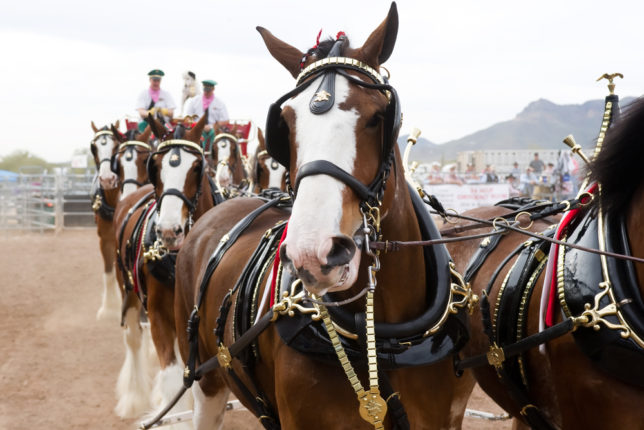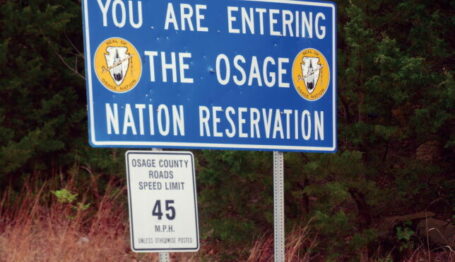Green Watch
Anheuser-Busch InBev: Lame Leadership on Land Use
Greenwashing Chronicles #3
 Budweiser Clydesdale horses. Credit: Christopher Halloran. License: Shutterstock.
Budweiser Clydesdale horses. Credit: Christopher Halloran. License: Shutterstock.

Editor’s Note: “Greenwashing” is “an unsubstantiated claim to deceive consumers into believing that a company’s products are environmentally friendly,” according to a March 2022 report posted at Investopedia.
Depending on your appetite for cynicism, greenwashing is either the mortal enemy or the duplicitous ally of the environmental, social, and corporate governance (ESG) movement. ESG was created by activists aiming to force corporations to adopt and invest in their left-leaning political objectives. The crusade has won a disturbing number of converts in corporate America, notably the gigantic investment firm BlackRock.
The Greenwashing Chronicles examines the woke corporations seeking ESG greenwashing, the advocacy nonprofits bathing them, and some of the reformers seeking to end the hypocrisy. Today’s feature is the multinational beer brewing firm Anheuser-Busch InBev.
A March 2017 CNBC headline showed a royal greenwashing treatment at work for the King of Beers: “Beer giant Anheuser-Busch InBev commits to 100 percent renewable energy.” More green scrubbing ensued the following January when AB InBev announced its American brews would soon carry a “100% renewable electricity” label due to “electricity purchased from the 290 MW (megawatt) Thunder Ranch wind farm in Oklahoma.”
This “Now Brewed with Wind Power” news was also delivered by the iconic Budweiser Clydesdales during a splashy February 2019 Super Bowl commercial.
AB InBev is affiliated with at least two left-leaning groups that engage in greenwashing by falsely promoting wind power as a renewable resource. The international beverage firm is a gold status member of the RE100 program (previously profiled in RE100: Crusaders Against Atomic Energy) and is listed as a member of the Ellen MacArthur Foundation (previously profiled in The Ellen MacArthur Foundation: A Circular Economy Opposed to Conservation).
RE100
RE100 is shorthand for “100 percent renewable electricity,” and it is a joint project of two left-leaning nonprofits: the Climate Group and the Carbon Disclosure Project (CDP). AB InBev is one of 70 corporations receiving “gold” membership status from RE100.
Despite a website mission statement claiming a commitment to “accelerate change towards zero carbon grids at scale,” the RE100 program explicitly excludes zero-carbon nuclear energy from the equation when it judges its members on their progress. Nuclear has been the largest source of carbon-free electricity in the United States for decades and is the only reliable option available to deliver “at scale” carbon-free power to a growing, energy-thirsty world.
Disallowing the nuclear option pushes RE100 signatories into few choices other than weather-dependent wind and solar power. Contrary to the pervasive eco-friendly myth, both of these choices are hungry consumers of resources. As noted in the prior Greenwashing Chronicles report on RE100: “A 2021 analysis by Bloomberg News estimated that solar needs 47 times more land to produce the same electricity as a nuclear power station and that the problem is far worse for wind (123 times).”
Selling a carbon-free energy program that chews up 123 times more of the environment than necessary is false advertising. RE100 and its members are guilty of greenwashing.
The Climate Group membership booklet for RE100 shows a $15,000 annual fee for the gold members and a $3,500 fee for the 300-plus basic members. Like the upgrade at the carwash, an elite greenwash is promised for the premium RE100 payments: “For our Gold level members, we are dedicated to celebrating your leadership stories.”
Circular “Reasoning”
The supposedly conservation-obsessed Ellen MacArthur Foundation (EMF) also falsely promotes wind power as conservation friendly. The EMF web page lists AB InBev as a member. And in a June 2018 Twitter statement, AB InBev announced: “We’re excited to join the CE100 @circulareconomy group of the Ellen MacArthur Foundation—making strides in sustainable and circular packaging alongside other companies.”
The “circular economy” is the primary mission of the Ellen MacArthur Foundation. The previous profile of the EMF explains what the mission means for the eponymous founder:
According to the nonprofit’s website, MacArthur’s sailing exploits taught her that we “need to transform our extractive, throwaway economic model to one that was based on the principles of a circular economy—an economy designed to keep materials in use, eliminate waste and regenerate natural systems.”
A 2019 white paper on climate policy released by EMF shows the group promotes only “wind, solar, and battery technologies” as carbon cutting energy options and laments that spending on these sectors is “not moving quickly enough.” No mention is made of nuclear or promoting investments in same.
The Greenwashing Chronicles profile concludes with this about EMF and members such as AB InBev:
The Ellen MacArthur Foundation and its membership may promote their “circular economy” as the path to “regenerate natural systems.” But their promotion of wind energy puts them solidly on the side of a uniquely horrible “extractive, throwaway economic model.”
Land Is Not Renewable
Thunder Ranch, the Oklahoma wind farm used by AB InBev, is run by Enel Green Power, an Italian wind-energy firm. Thunder Ranch has 120 wind turbines spread out over 64 square miles near Marland, Oklahoma.
For comparison, a nuclear power station that occupies just one square mile can power 600,000 to 1 million American homes (depending upon air conditioning demand). So, rather than just brew beer, nuclear facilities with the land use commanded by Thunder Ranch could satisfy the electricity needs of 38 million to 64 million residences. The higher end equals half of the homes in the nation.
Enel Green Power also runs the Chisholm View facility with 79 square miles of wind turbines sited 25 miles due west of Marland. The combined 143 square miles consumed by these two projects from one big wind corporation is nearly five times the size of the nearby city of Stillwater, home to 49,000 residents and Oklahoma State University.
In May 2019, a few months after the Super Bowl commercial promoting AB InBev’s “Now Brewed with Wind Power” beer, one of Enel’s Chisholm View turbines fell over.
This was neither the first nor last such incident for Enel Green Power. In October 2021, a turbine fell over at an Enel facility in Kansas. The same thing happened to Enel in Kansas in December 2014. In November 2013 an Enel-operated turbine in Mexico caught on fire. In 2016 a 113-foot-long blade fell off a turbine run by Enel in New York state. In October 2014 an Enel wind turbine caught on fire in New York. And in 2009 a 200-foot turbine run by the firm collapsed in New York.
But Enel Green Power is not a particularly unlucky wind corporation. These catastrophic turbine failures are just the nature of the business.
Ninety miles from Thunder Ranch, a wind turbine owned by a different corporate wind firm caught fire in January 2022. Yet another central Oklahoma turbine, not run by Enel, fell over in June 2022. News reports covering the preceding eight days in June 2022 showed three other turbines crashing to Earth in Colorado, Iowa and Australia.
In the United States alone there are now more than 70,000 wind turbines intermittently spinning when the wind is right. And when they’re not falling over or on fire. They catch on fire at an estimated annual rate of at least one for every 2,000 turbines installed (fire is sometimes the reason they fall over). That’s roughly 35 very difficult blazes to extinguish each year, and some of them ignite destructive wildfires.
In some cases, farming takes place underneath the so-called wind farms, at an obviously elevated risk for the workers. But otherwise, the large chunks of land and the landscape close to wind facilities has been spoiled for human habitation, recreation, and most everything else.
The same goes for the airspace above: Wind turbines are notorious shredders of bats, big raptors such as bald eagles, and other hard-to-replace wildlife. In April 2022, Next Era Energy, another large corporate wind firm, was assessed an $8 million fine by the U.S. government for killing 150 eagles with its wind turbines.
Greenwashing Leadership
The 2017 CNBC report about AB InBev’s wind power noted above contains a quote from the Climate Group’s RE100 project director.
Delivering on the promise to celebrate the “leadership stories” of gold members, he said this: “AB Inbev is significantly boosting demand for renewables around the world, showing just the kind of leadership we need to slow climate change and speed a low carbon economy, inspiring other companies right along the value chain.”
What he was really clamoring for was global leadership that will lead to more dead eagles, ruined landscapes, turbine fires and tower collapses. If the mission of the giant beverage conglomerate was to bathe itself in the greenwashing of RE100 and the Ellen MacArthur Foundation, then Thunder Ranch was a rousing success. But otherwise, joining their anti-nuclear, big-wind agenda means the Budweiser Clydesdales will be trampling the environment rather than preserving it when you watch their Super Bowl commercials.



